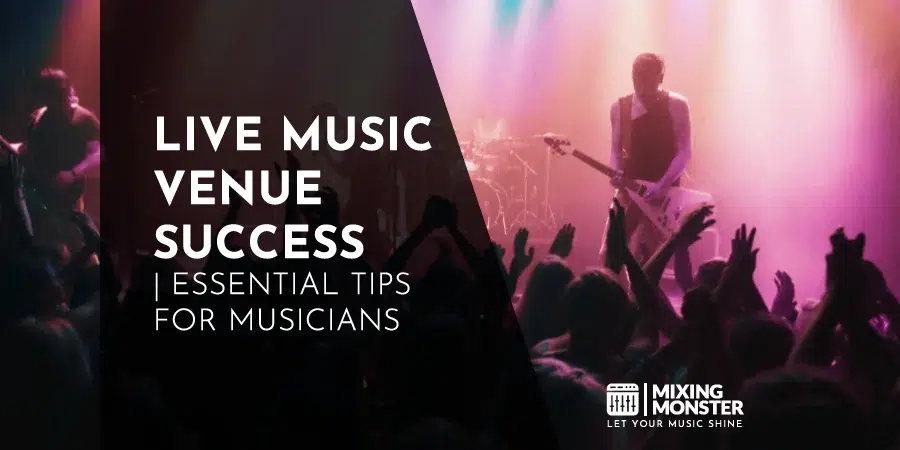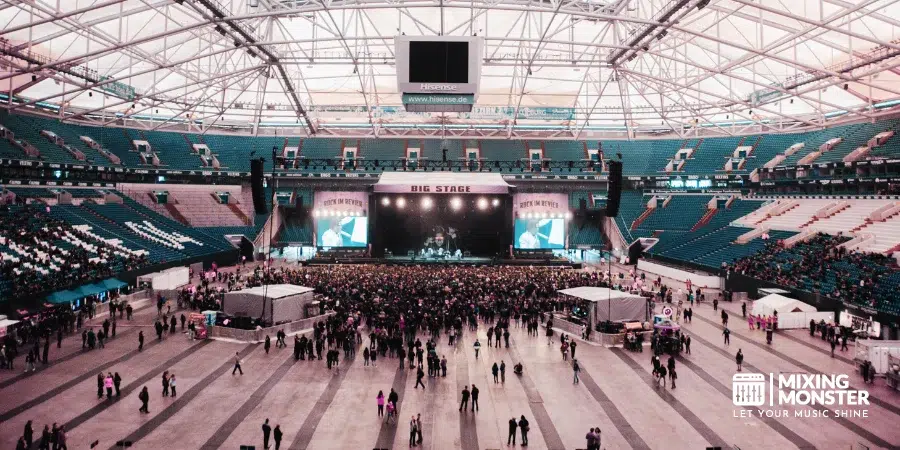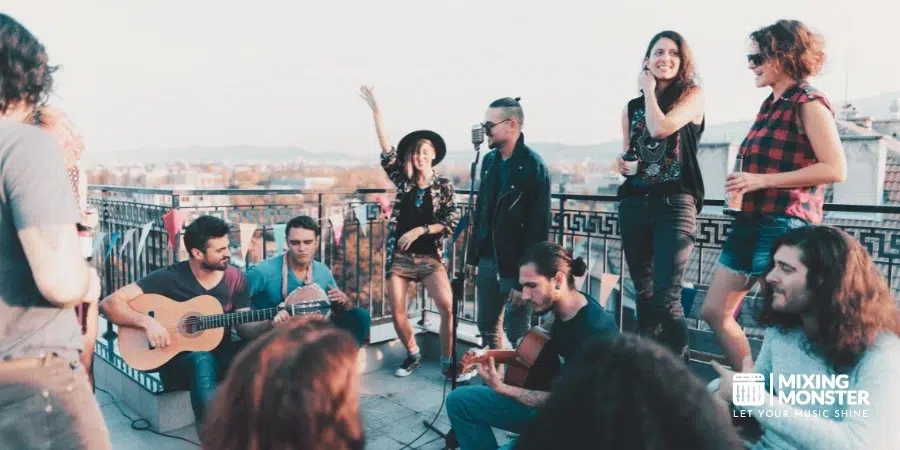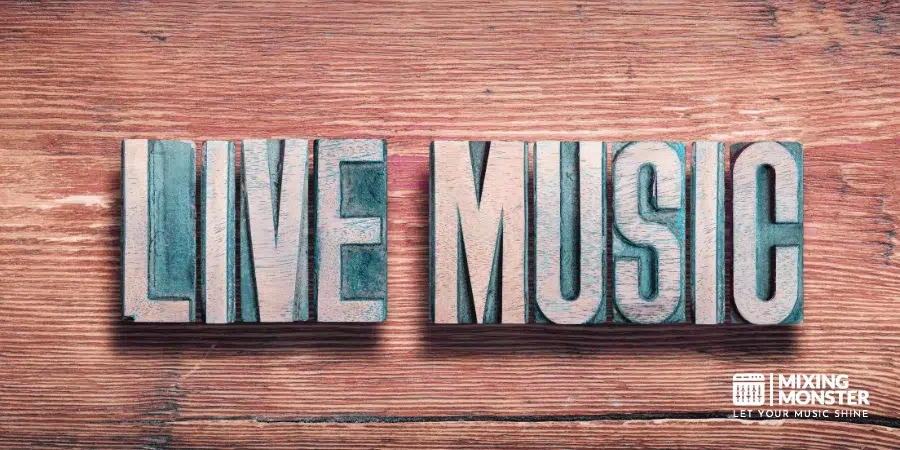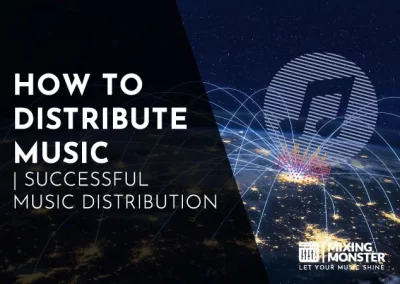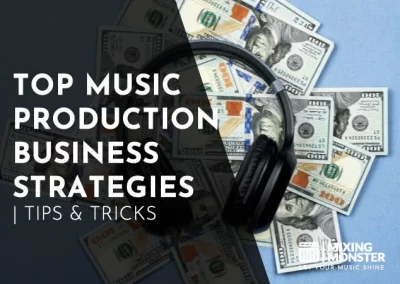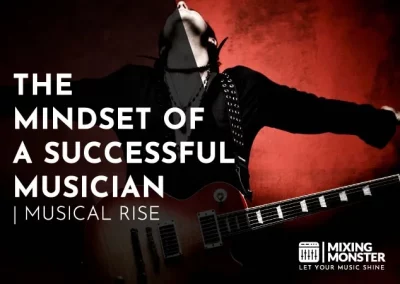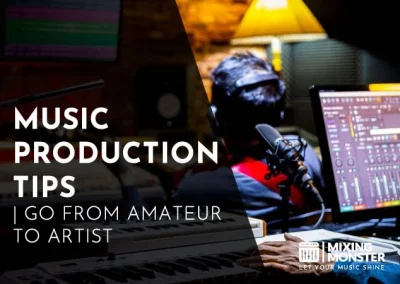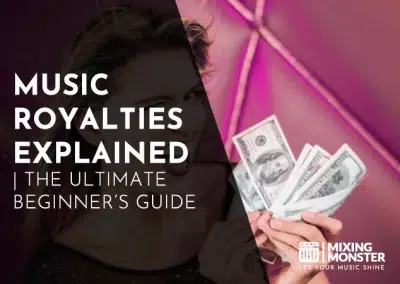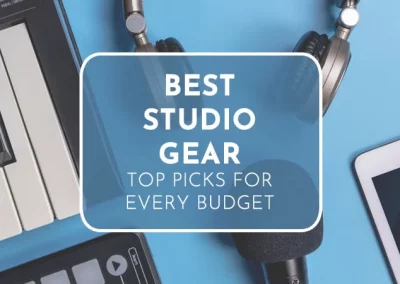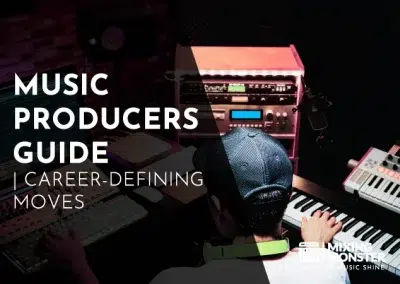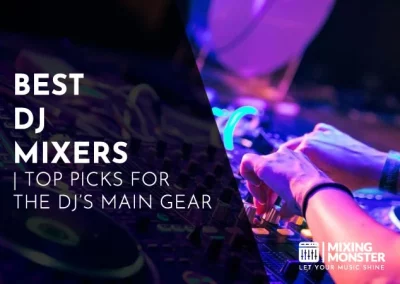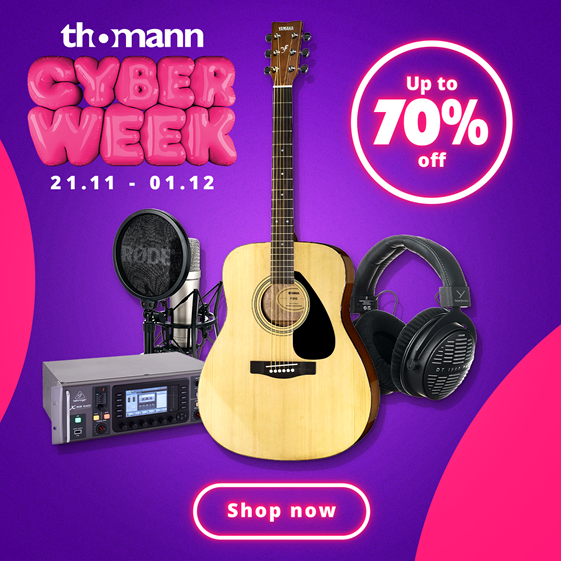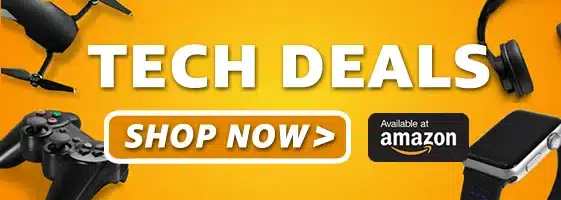Home > Blog > Music > Music Industry
Disclosure: Some of the links below are affiliate links, meaning that at no additional cost to you, we will receive a commission if you click through and make a purchase. Read our full affiliate disclosure here.
There’s something magical about standing in a packed room as the lights dim, feeling that buzz of anticipation just before your favorite artist steps out. Whether you’re a performer chasing your first gig or just a music fan always on the hunt for new sounds, live music venues are where the real connections happen—between artists, audiences, and sometimes even strangers who end up singing along together.
Live music venues serve as cultural anchors, providing artists with a stage and communities with a reason to gather. You’ll find everything from cozy bars spotlighting local acts to sprawling concert halls hosting global stars. Each space shapes the sound and the vibe in its own way.
Even as streaming rules the way we listen, nothing really beats the energy of a live show. Venues keep upping the ante—offering VIP perks, exclusive merch, and wild tech setups that make you feel like you’re right in the middle of something special.
KEY TAKEAWAYS:
- Live music venues spark connections between artists and audiences that streaming can’t touch.
- If you want to play venues, you’ll need solid preparation, smart promotion, and a genuine understanding of what each space and crowd requires.
- Modern venues rely on tech and creative revenue streams to make the live experience more than just a ticketed show.
Table Of Contents
1. Understanding Live Music Venues In Today’s Music Industry
2. Preparing To Book Your First Live Music Venue Gig
3. Promoting Your Live Music Venue Performance
4. Perfecting Your Live Performance For Venue Success
5. Maximizing Revenue Beyond Ticket Sales
6. Technology Transforming Live Music Venues
7. Key Takeaways For Live Music Venues
FAQ

1. Understanding Live Music Venues In Today's Music Industry
Live music venues are truly the backbone of the music industry, providing artists with a platform to shine and sustaining the business. The live music business is massive—worth around €38 billion and providing jobs to hundreds of thousands worldwide.
Different Types of Live Music Venues
Venues come in all shapes and sizes, each one serving up a different slice of the music world:
- Small Clubs and Bars: Typically accommodate 50-300 people, spotlighting local and emerging artists. They operate on thin margins, drawing most of their revenue from drink sales rather than ticket sales.
- Mid-Size Venues: Hold about 300-1,000 folks and act as stepping stones for artists on the rise. These places often have pro sound systems and better staging.
- Large concert halls typically accommodate 1,000 to 3,000 people, usually for established acts. You’ll see bigger production, plus merch and VIP deals.
- Arenas and Amphitheaters: 3,000+ capacity, built for major touring acts. Full-scale sound and lighting—everything’s bigger.
- Festival Grounds: Temporary or permanent setups for multi-day, multi-stage lineups. Anything goes, really.
Every type sets its own mood, shaping how the artist performs and how the crowd receives it.
The Evolving Business Model of Venues Post-Pandemic
The live music world reached a crossroads after the pandemic, forcing venues to rethink their approach to everything. Now you’ll see:
Hybrid Revenue Streams:
- Tiered ticket pricing for in-person shows
- Livestreams for fans who can’t make it out
- More merch options
- Premium packages for those who want the extras
Operational Changes:
- Flexible cancellation rules
- Better ventilation (finally, right?)
- Contactless everything—payment, entry, the works
- Booking more than just music: comedy, podcasts, you name it
Money’s tighter, too. Venues now often ask for larger guarantees from artists or take a larger cut of merchandise sales. Insurance rates have skyrocketed, especially for small, independent businesses.
Some venues have started banding together or joining larger entertainment groups to secure better deals and increase their booking power. It’s a trend that’s definitely shaking up who gets to play where.
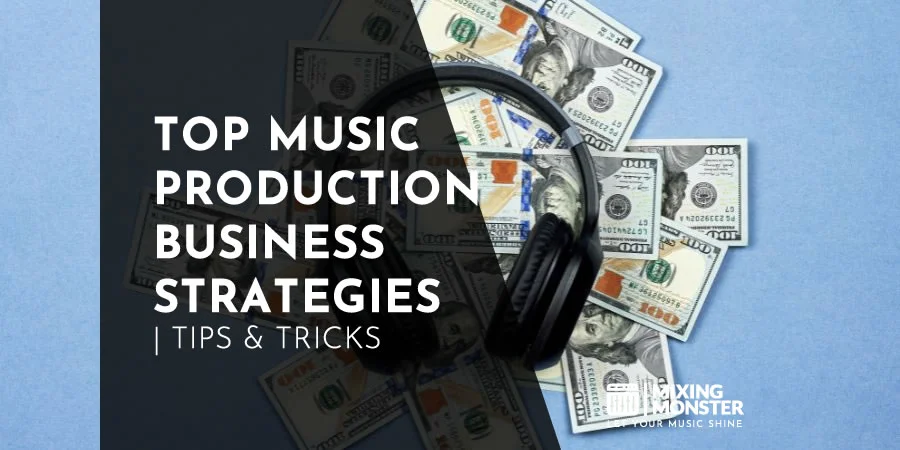
How Venues Select and Book Artists
Booking looks different everywhere, but most venues follow some pattern:
- Research and Discovery:
They review artists’ streaming statistics, social media presence, and past ticket sales in the area. - Risk Assessment:
Bookers weigh the odds based on things like:- How many fans the artist might actually bring out
- Which day of the week would the show land on
- Other events happening nearby
- What the artist needs for production and how much that’ll cost
- Deal Structures:
The usual suspects:- Flat fee guarantees
- Percentage splits (70/30, 80/20—those kinds of deals)
- Door splits with a minimum guarantee.
- Four-wall rentals, where the artist pays to use the space
The live music scene brings together venue managers, talent buyers, promoters, and production personnel—a whole crew that all have a say in what gets booked.
Building Relationships With Venue Owners and Bookers
If you want to get booked, you’ve got to get what matters to venue folks:
Effective Communication Approaches:
- Send a solid, up-to-date press kit with all your technical needs
- Reply fast when they ask about your schedule
- Be upfront about your past draw and ticket sales
- Don’t overhype—give a real sense of your crowd potential
Relationship-Building Strategies:
- Go to shows at the venues you want to play—see what the vibe’s like
- Network at industry meetups or wherever bookers hang out
- Actually promote your gigs like you promised
- Show up early and ready for soundcheck
Good concert venues notice when artists make life easier and show better. If you bring a crowd, play a killer set, and don’t cause headaches, you’re way more likely to get asked back.
Stay in touch between gigs—share your successes, and let them know what you’re up to. Over time, that can mean better slots and sweeter deals.
2. Preparing To Book Your First Live Music Venue Gig
Landing your first gig at a music venue isn’t just about luck—it’s about solid prep, killer promo materials, and getting a feel for what venues actually want. When you reach out with the right stuff at the right moment, you’re already ahead of most folks trying to book a show.
Creating an Irresistible Electronic Press Kit (EPK)
Think of your EPK as your musical handshake—it’s what you send to venues to show them you’re legit. Include some high-resolution photos (live shots, promotional pics, etc.) that really showcase your vibe, so they know what to expect.
You’ll want to add polished audio recordings—select your best 3-5 tracks that really showcase your range. Live videos are gold for this—they let bookers see how you handle a crowd.
Write a concise bio (150-200 words is plenty) that conveys your musical journey, influences, and notable accomplishments to date—got press quotes? Even if they’re from a random blog, include them.
List out your previous gigs—dates, venues, the works. Even if it’s just a couple, that’s fine. Bookers want to know you’ve played somewhere and can bring people out.
EPK Essentials Checklist:
- Professional photos
- Audio/video samples
- Bio and press quotes
- Performance history
- Social media links and metrics
- Contact information
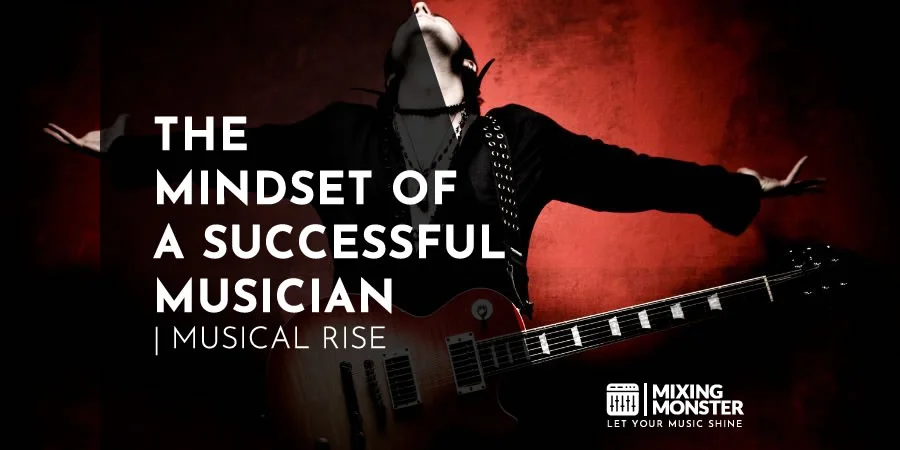
Negotiating Fair Compensation and Contract Terms
Dig into what new acts get paid in your town—usually, that means door deals (a cut of ticket sales) before you can ask for guarantees.
Go in ready to discuss options: flat fees, door splits, and a minimum guarantee, if you’re lucky. Determine what you need to make the night work, based on the number of people you can realistically accommodate.
Hammer out the details in writing—set length, load-in, sound check times. Ask what gear they have and what you’ll need to haul in yourself.
Key Contract Points:
- Payment amount and method
- Performance duration
- Sound check allocation
- Merchandise sales terms (Will the venue take a percentage?)
- Cancellation policy
- Marketing responsibilities
Always get it in writing—even if it’s just an email. It protects everyone if things get out of hand later.
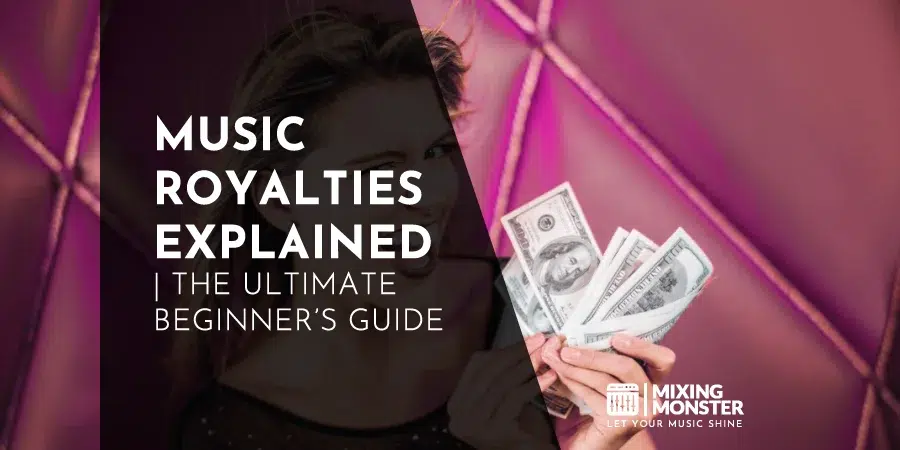
Understanding Technical Riders and Stage Requirements
Put together a technical rider that spells out what you need on stage—gear, layout, all that. Add a basic stage plot so everyone’s on the same page.
List out your input needs and which mics go where. Tell them what kind of monitor mixes each musician wants, if you’re particular about that.
Keep your requests realistic. Most local venues don’t have much extra gear, so focus on what you absolutely need, not your dream setup.
If you’ve got anything weird—special lights, projections, oddball instruments—let the venue know early. Surprises on show day are never fun for anyone.
Bring some backup stuff just in case the venue’s gear craps out. Extra cables, adapters, maybe even a spare guitar or two if you can swing it—it’s saved many a gig, trust me.
Timing Your Outreach for Maximum Response Rate
Most venues fill their calendars 2-3 months in advance, but larger rooms might book 4-6 months ahead. Time your pitch so you’re not scrambling—or worse, too late.
Check out the venue calendars to see when they typically book. Attend shows at your target spots, talk to the attendees, and try to gauge when bookers are most approachable.
Shoot your emails on Tuesday or Wednesday mornings—booking folks are usually catching up on admin then. If you don’t hear back in a week or so, follow up with a quick, polite message.
Keep a spreadsheet of all your venue contacts, including the date you reached out and the name of the person who replied. It’s a little nerdy, but it’ll save you from double-emailing or losing track of who’s who.
When you make your first contact, lead with your best assets—perhaps a recent milestone, a growing fan base, or why you align with their vibe. Skip the fluff.

3. Promoting Your Live Music Venue Performance
If you want people actually to show up, you’ve got to promote your gig from every angle. That means creating digital content, using old-school flyers, collaborating with the venue, and producing content that people want to share.
Collaborative Marketing Strategies With Venues
Teaming up with the venue is a huge advantage. They’ve already got a crowd and a megaphone—use it. Ask if they’ll plug your show in their email blasts; those lists can reach many more people than your social media accounts alone.
Push for details in those promotions—venue, date, time, ticket info, age limits, all that. Make it easy for people to decide to come out.
Propose ways to cross-promote so it’s not just you doing all the work:
- Co-branded posts on social media
- Joint press releases sent to local outlets
- Get your show on their printed promo materials
Ask if they’ll list you on their concert calendars or in print ads—those still reach people who aren’t glued to their phones. Venues want packed rooms, so they’re usually happy to help if you ask.
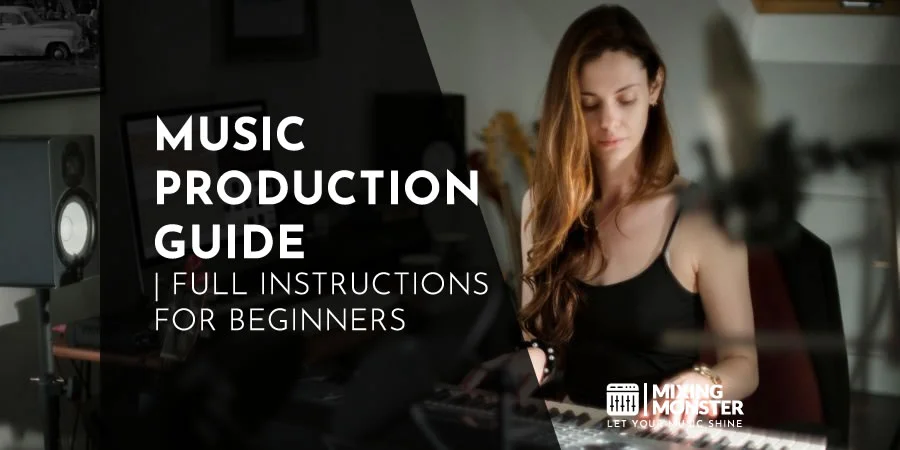
Leveraging Social Media To Fill Seats
Social media is your friend here. Set up a Facebook event so fans can RSVP and share. It’s basic, but it works.
Tweak your approach for each platform:
- Instagram: Post rehearsal clips, countdown stories, behind-the-scenes stuff—keep it casual
- TikTok: Short, punchy videos with your music—doesn’t have to be fancy
- Twitter: Jump in on local music convos, drop updates, retweet fans
Start early—give yourself at least three months so people have time to get hyped and spread the word.
Think about targeted ads, too. Even $50 or so, aimed at folks near the venue who enjoy live music, can make a difference if you set it up right.
Make it easy for fans to share your show—post graphics with all the details. Honestly, word of mouth is still king when it comes to getting people to concerts.
Creating Event-Specific Content That Drives Ticket Sales
Craft content that turns your upcoming show into something folks don’t want to miss. Go beyond the basics—let people feel the excitement and see the real perks of attending.
When you’re putting together promotional materials, spotlight the stuff that makes this particular event stand out, like:
- One-night-only collaborations with other artists
- Brand new songs or material making their debut
- Cool venue quirks or a bit of its history
- Special themes or production twists
Offer genuine value to potential attendees through your promos. Things like welcome emails for new subscribers or VIP pre-sales for loyal fans add a real sense of exclusivity and reward—people notice that.
Try putting together a quick promo video—mix in snippets of your music and some shots of the venue. Let people imagine themselves there. Toss in a few testimonials from past shows to build up credibility, and, honestly, a bit of FOMO never hurts.
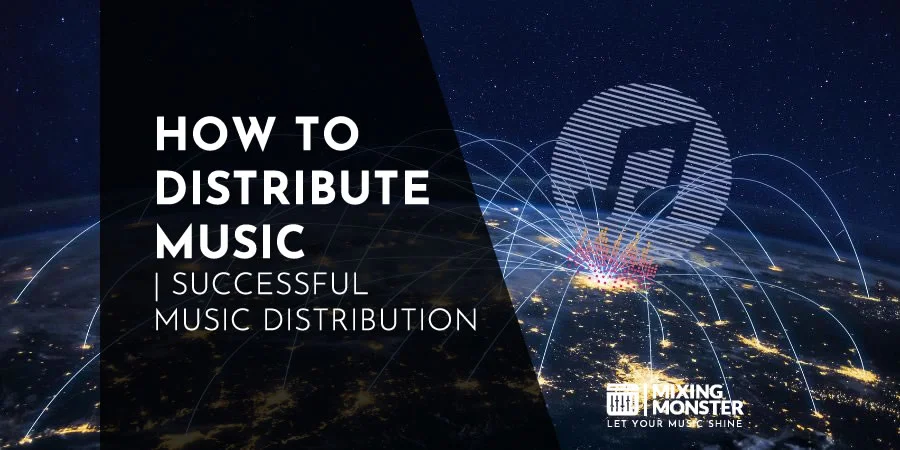
Budgeting for Promotion vs. Expected Return
Consider carefully how you allocate your promotional budget. Not every marketing channel gives you the same bang for your buck—it really depends on who you’re trying to reach and what tickets cost.
Here’s a typical breakdown for a mid-sized show:
| Promotional Channel | Percent of Budget | Expected Impact |
|---|---|---|
| Social Media Ads | 30-40% | Wide reach, moderate conversion |
| Physical Materials | 20-25% | High conversion, limited reach |
| Email Marketing | 10-15% | High conversion, existing fans |
| Venue Co-Marketing | 10-20% | Leverages venue’s audience |
| PR/Media Outreach | 10-15% | Broader awareness, credibility |
Use unique discount codes or separate landing pages for each channel so you can actually see what’s working. That data is gold for tweaking your approach next time.
Don’t forget that getting listed in concert calendars and print media usually requires a bit of time. That’s a high-value move, especially for smaller budgets.
Strive to strike a balance between reaching new audiences and keeping your existing fans informed—both matter.

4. Perfecting Your Live Performance For Venue Success
A killer live performance takes real prep and a willingness to adapt to each venue. Musicians who adjust their shows for the space and truly connect with the crowd leave a mark—and venue owners notice.
Adapting Your Set For Different Venue Sizes and Acoustics
Tiny, cozy venues require a distinct approach compared to large concert halls.
In smaller rooms, opt for unplugged or stripped-down arrangements to avoid overwhelming the sound. When playing in larger spaces, you may want to increase the dynamics and aim for a fuller sound to fill the space.
Get to sound check early and actually move around the stage to find the sweet spot. You’ll dodge a lot of headaches—like weird echoes or dead zones—if you do this right.
Let your set pacing fit the vibe. High-energy songs are perfect for standing crowds, but if people are seated, lean into storytelling and subtler shifts. It’s smart to have alternate versions of songs ready, just in case the room’s energy takes you by surprise.
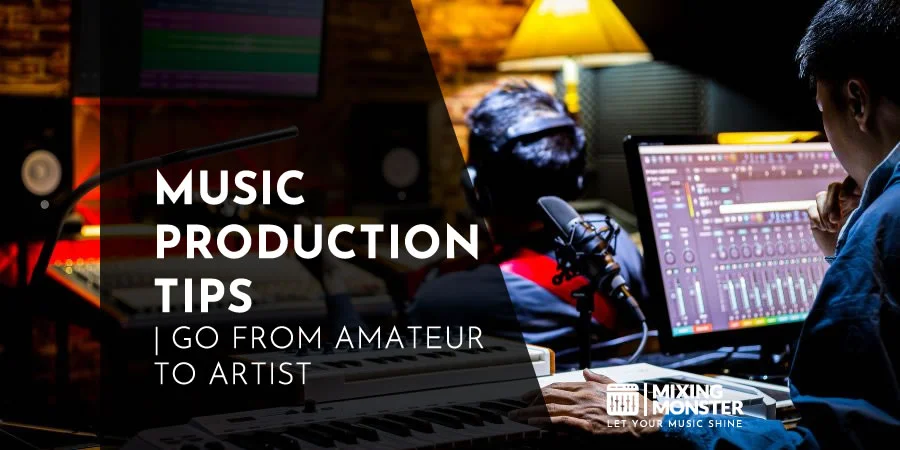
Stage Presence Techniques That Connect With Audiences
Making eye contact goes a long way in building a connection.
Try scanning the crowd and locking eyes with folks in different parts of the room. It helps people feel like they’re actually part of the moment.
Match your physical movement to both the music and the space.
Big venue? Use broader gestures and move around more so that even those in the back can feel the energy. In a small spot, subtle moves and expressions create a more intense vibe.
Plan what you’ll say between songs, but keep it real.
Share quick, honest stories—where a song came from, a weird tour moment, whatever gives people a glimpse behind the curtain. Connecting with tough crowds takes persistence; keep your energy up even if they’re slow to warm up.
Managing Technical Challenges in Various Venue Settings
Expect tech issues and have a backup plan ready.
Bring extra cables, batteries, and a few tools. If something fails, having a simple version of your songs lets you keep going. No one likes dead air.
Lighting can make or break your set, honestly.
Talk to whoever’s running lights during setup. Figure out where to stand so you’re not stuck in the shadows. Being visible really helps you connect with people.
Monitors and sound setups vary significantly from venue to venue.
Get comfortable performing even if the monitors aren’t great by:
- Rehearsing with barely any monitoring
- Reading physical cues from your bandmates
- Paying attention to the room’s natural acoustics
- Using clear signals if you need to fix something mid-song
Creating Memorable Moments That Build Venue Loyalty
Customizing your set for the venue shows you care.
Reference the local scene, pay homage to the venue’s history, or tailor your setlist to the crowd. Venue owners really notice that kind of effort.
Throw in a surprise or two to keep things fresh. Maybe try:
- An unexpected cover
- A guest spot from a local musician
- A new twist on one of your own songs
- A bit of audience participation
Stick around after the show and actually talk to people.
Meet the audience, sell your merch personally, and grab some emails for your mailing list. That personal touch can turn casual fans into regulars who’ll come back—and bring friends.

5. Maximizing Revenue Beyond Ticket Sales
Ticket sales are the backbone, sure, but the venues that thrive usually find ways to boost income with other streams. The fundamental difference between scraping by and really succeeding? It’s all about making the most of every audience member once they’re in the door.
Strategic Merchandise Positioning at Venue Shows
If you set up your merchandise correctly, you can significantly increase your revenue.
Put your merch booth where people can’t miss it—by the entrance, exit, or near the bar. If possible, set up a digital display that cycles through the items for sale throughout the night.
Offer venue-specific merch alongside artist items. T-shirts, posters, and limited-edition stuff with the venue’s logo can become must-haves for regulars. Indie venues can learn a great deal from the big guys here.
Train your staff to promote merch without being pushy. Bundle deals or event-only discounts help move more items. Keep an eye on what sells and who’s buying—it’ll help you stock the right stuff next time.
Collaborate with local artists to create unique merchandise that reflects your venue’s vibe. These limited collabs can fetch higher prices and really boost your venue’s place in the local scene.
Digital Revenue Streams During Live Performances
Live streaming presents a substantial revenue opportunity for venues of virtually any size.
Consider offering pay-per-view options for select shows—especially when you’re at maximum capacity or a big-name act has sold out. You’ll reach a much wider audience than just those who can squeeze through the door.
A subscription model is also a viable option. Fans who can’t attend in person may pay a monthly fee for access to your venue’s livestreams. Many venues turn tours into more than just ticket sales by embracing digital strategies.
With the artist’s blessing, sell digital downloads of recorded performances. If you include some bonus content or make them a “limited edition,” fans will snap them up.
Mobile apps can significantly enhance the in-venue experience and generate additional revenue. You could include:
- Skip-the-line drink orders
- Premium content access
- Virtual tip jars for performers
- Interactive event info
Try scattering QR codes around your venue—link them to exclusive digital content, special deals, or in-app purchases. It’s a simple way to encourage guests to spend a bit more.
VIP Experiences and Premium Offerings
Design tiered VIP packages for different budgets and tastes.
The basic package is preferred seating and a complimentary drink. If guests want to splurge, offer stuff like:
- Meet-and-greets with the band
- Exclusive pre-show acoustic sets
- Private lounge access with top-shelf drinks
- Dedicated wait staff
- Priority parking
Festivals have successfully boosted revenue with VIP experiences, and there’s no reason smaller venues can’t borrow a few of those tricks.
Craft luxury experiences that complement your venue’s ambiance. If you’re running a jazz club, consider offering tableside cocktail service. For a rock club, backstage tours or access to soundchecks could be the key.
Please keep track of what your VIPs like and what they purchase. When you personalize future offers, you’ll keep them coming back—and spending more.
Building Your Mailing List Through Venue Performances
A strong email list is pure gold for future ticket sales and merch pushes.
Set up sign-up spots at the door, the bar, and the merch booth. Give folks a reason to join—maybe a drink discount or a bit of exclusive content.
Encourage staff to ask for emails during genuine interactions. After helping with seating or answering questions, a friendly “Hey, want to join our list?” actually works better than you’d think.
Artists need to ensure they register performances for proper royalties, and venues can help out while gathering valuable customer data.
Segment your email list by the events people attend and their interests. That way, you can target upcoming shows to the fans most likely to bite—way more effective than blasting everyone.
Tie a loyalty program to your mailing list. Let people earn points for attending shows, purchasing drinks, or referring friends. Rewards could be early ticket access, drink deals, or special venue experiences.
6. Technology Transforming Live Music Venues
Technology is revolutionizing the live music scene, making shows more immersive and interactive. From slick streaming setups to wild sensory tricks, the concept of what a concert is continues to evolve.
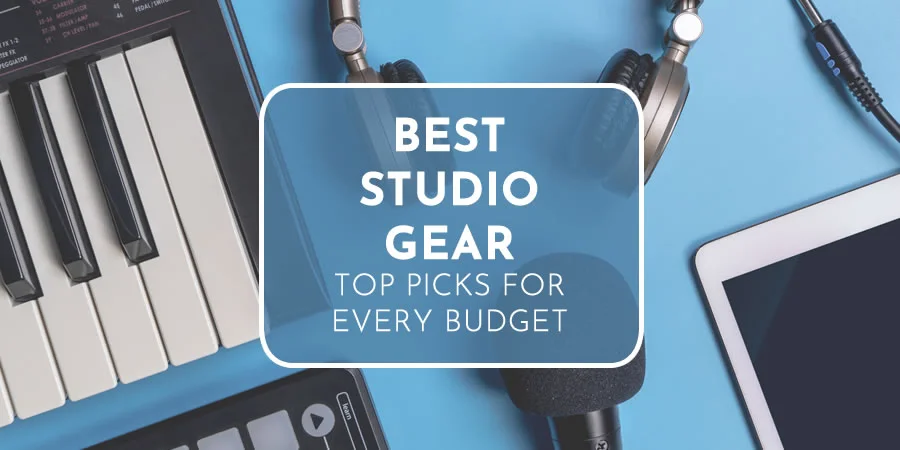
Integrated Streaming Options for Hybrid Performances
Live streaming isn’t just a grainy phone feed anymore. These days, it’s all about hybrid experiences that blend the energy of the room with the reach of the internet.
Many venues now install permanent multi-camera rigs, allowing remote viewers to get a real sense of the action from every angle—something that was previously impossible.
Venues usually set up audio mixing specifically for streams, which isn’t just a copy of what’s coming through the house speakers. That way, both in-person and online crowds get the best sound possible.
With killer WiFi infrastructure, even packed venues can pull off high-def streaming without a hitch.
Some forward-thinking spots offer virtual “seating” options:
- Basic streaming access
- Interactive virtual attendance with chat
- Premium passes with multi-cam views and backstage peeks
Audience Engagement Tools and Apps
Venue-specific apps are everywhere now, making the concert experience smoother from start to finish. These digital tools do a bit of everything.
Pre-show features:
- Virtual venue tours and seat previews
- Digital tickets and contactless entry
- Food and drink pre-orders
During the show, apps let fans vote on song requests, join in on light shows, or leave instant feedback. TendedBar’s technology, for example, utilizes automated drink systems to reduce wait times and gather valuable data.
After the show, these apps keep fans engaged with exclusive content, merch sales, and fan forums. It’s a way to keep the buzz going and build real community between artists, venues, and audiences.
Cutting-Edge Sound and Lighting Technologies
Sound tech has come a long way—no more “dead zones” where you can barely hear the band.
Adaptive sound systems constantly analyze the room and tweak output on the fly.
With object-based audio, venues can send specific sounds to exact spots, building a 3D landscape. Some places even let you fine-tune your own mix through headphones or assistive devices—pretty wild, honestly. Check out these audio enhancement options for more on that.
Lighting design’s gotten just as creative. Programmable LEDs sync with music using AI, and can:
- Read musical cues in real time
- Create responsive visual patterns
- Track performer movements with motion sensors
Technology in venue reinforcement even stretches to the architecture—think programmable walls, projection mapping, and interactive displays that totally transform the space.
Virtual and Augmented Reality Enhancements
VR and AR are starting to make concerts feel like something out of a sci-fi movie—multisensory, immersive, and way more than sound and lights.
You’ll find AR zones in many venues now, where people can use their phones to unlock extra visuals layered over the performance.
Some venues even offer motion-synced chairs and haptic feedback—so you literally feel the music. It’s especially cool for rhythm-heavy genres.
AR overlays can pop up lyrics, artist bios, instrument details, or wild visuals that sync with the music.
Some examples:
- Lyrics and song info
- Artist background details
- Instrument specs
- Visual effects triggered by musical moments
Full-blown VR shows are emerging for special events, allowing fans who can’t attend in person (or those with mobility challenges) to experience the venue virtually. It’s making concerts more inclusive and opening up creative new directions for artists and venues alike.

7. Key Takeaways For Live Music Venues
Running a live music venue in 2025 means striking a balance between tradition and innovation. The magic of live performance remains the heartbeat of the industry. Still, venues that thrive are those that adapt quickly, diversify their revenue streams, and keep their communities at the center. Here are the essentials:
- Location & Identity Matter:
Select a location that fills a cultural void in your city or neighborhood. Position your venue as more than just a stage—make it a destination with its own personality and loyal following. - Quality Programming Drives Loyalty:
Great acts bring crowds, but consistent curation builds reputation. Mix established names with rising local talent to keep audiences engaged and excited. - Design for Flexibility & Atmosphere:
From modular seating to immersive lighting, the layout should be adaptable to accommodate different shows and audiences. A venue that feels welcoming and memorable will consistently draw people back. - Audience Experience is Everything:
Fans want more than a ticket—they want stories, moments, and a sense of belonging. Elevate the experience with unique perks, interactive elements, and seamless service. - Diversify Beyond the Bar:
Alcohol sales alone won’t sustain a venue. Explore merch, food, livestreams, VIP packages, and hybrid events to maximize every show’s potential. - Stay Tech-Savvy:
Invest in sound, lighting, and digital tools that enhance both the in-person and online experience. Hybrid concerts, AR/VR elements, and venue apps are no longer optional—they’re expected. - Build Community Roots:
Venues thrive when they become cultural anchors. Support local artists, collaborate with nearby businesses, and foster a sense of community that keeps people invested in your success.
If you can deliver unforgettable nights while staying adaptable, your venue won’t just survive—it’ll become a cornerstone of the live music scene.

FAQ
1) What factors should I consider when choosing a live music venue?
When searching for a live music venue, consider the acoustics, sight lines, and the capacity of the space. Good sound matters, but so does being able to see the stage—nobody likes craning their neck for two hours.
Location’s a big deal, too. Is there parking? Can you get there by train or bus? Sometimes the best venues are tucked away in tricky spots, and late-night transit can be a pain.
Ticket prices? All over the map. Some venues offer early bird deals or VIP upgrades—think front-row perks, backstage passes, or a fancy lounge if you’re feeling flush.
2) How does the size of a music venue affect the concert experience?
Tiny venues feel personal—you’re right up close, catching every little detail from the band. The sound tends to be tighter, and honestly, it’s just easier to get lost in the music.
Mid-sized venues, typically seating 500 to 2,000 people, strike a sweet spot. You get solid sound and lights, but you still feel connected to what’s happening on stage.
But once you’re in the big leagues—arenas and massive halls—it’s all about the spectacle. Giant screens, wild lights, special effects. You lose some intimacy, but the energy is off the charts if you’re into that kind of thing.
3) What are the top-rated live music venues in major cities like Nashville and Houston?
In Nashville, you can’t skip the Ryman Auditorium—folks call it the “Mother Church of Country Music” for a reason. Then there’s the Grand Ole Opry and Bluebird Cafe, both packed with history and regular shows from legends and newcomers alike.
Houston’s White Oak Music Hall gives you options, from cozy indoor gigs to big outdoor shows. House of Blues Houston is a solid bet for good sound and atmosphere, while Numbers Night Club is the go-to for alternative music fans—especially on those wild weekend dance nights.
If you’re in Austin, the Continental Club and Antone’s Nightclub are classics—real-deal Texas music, up close and personal, with local icons dropping by all the time.
4) How can I find local live music events happening this weekend?
Apps and sites like Bandsintown, Songkick, and Eventbrite make it way easier to track your favorite acts and spot local gigs. They’ll even ping you when someone you follow announces a new show nearby.
Don’t forget social media—Instagram and Facebook are goldmines for last-minute gig announcements. If you follow venues, local bands, or promoters, you’ll catch shows that might not show up anywhere else.
And, by the way, check your city’s newspaper or entertainment website. Most have a “what’s happening this weekend” section packed with live music picks you might otherwise miss.
5) Why is it important to support local live music venues?
Local venues are where new artists hone their skills and begin building a following. If you care about discovering fresh talent, these spots are essential—they give bands a stage before they hit it big.
They’re not just suitable for music lovers, either. These venues pump money into the local economy, create jobs, and can turn a sleepy neighborhood into a buzzing destination. Restaurants, bars, even real estate—everyone benefits when the music scene is alive.
Without these indie venues, music would get bland. Supporting them keeps things interesting, preserving a mix of sounds and styles you won’t find at the big corporate spots.
6) What should I expect in terms of amenities at a small music venue?
Most small venues stick to the basics—think a bar with a short list of drinks. Sometimes, a food truck is parked outside, or perhaps a few simple snacks and sandwiches are available on the menu inside. Now and then, you’ll find a spot that partners up with a local restaurant, which is always a pleasant surprise.
Seating? Well, don’t count on much. These places usually go for standing-room-only vibes, with a few stools along the walls or at the bar if you’re lucky. Some venues recommend bringing portable chairs for outdoor shows or specific events, which, honestly, isn’t a bad idea.
Restrooms can be a bit of a gamble—sometimes there’s just a single stall or two for each gender. If the show’s packed, expect to wait in line during breaks. It’s just part of the deal at these smaller spots.

